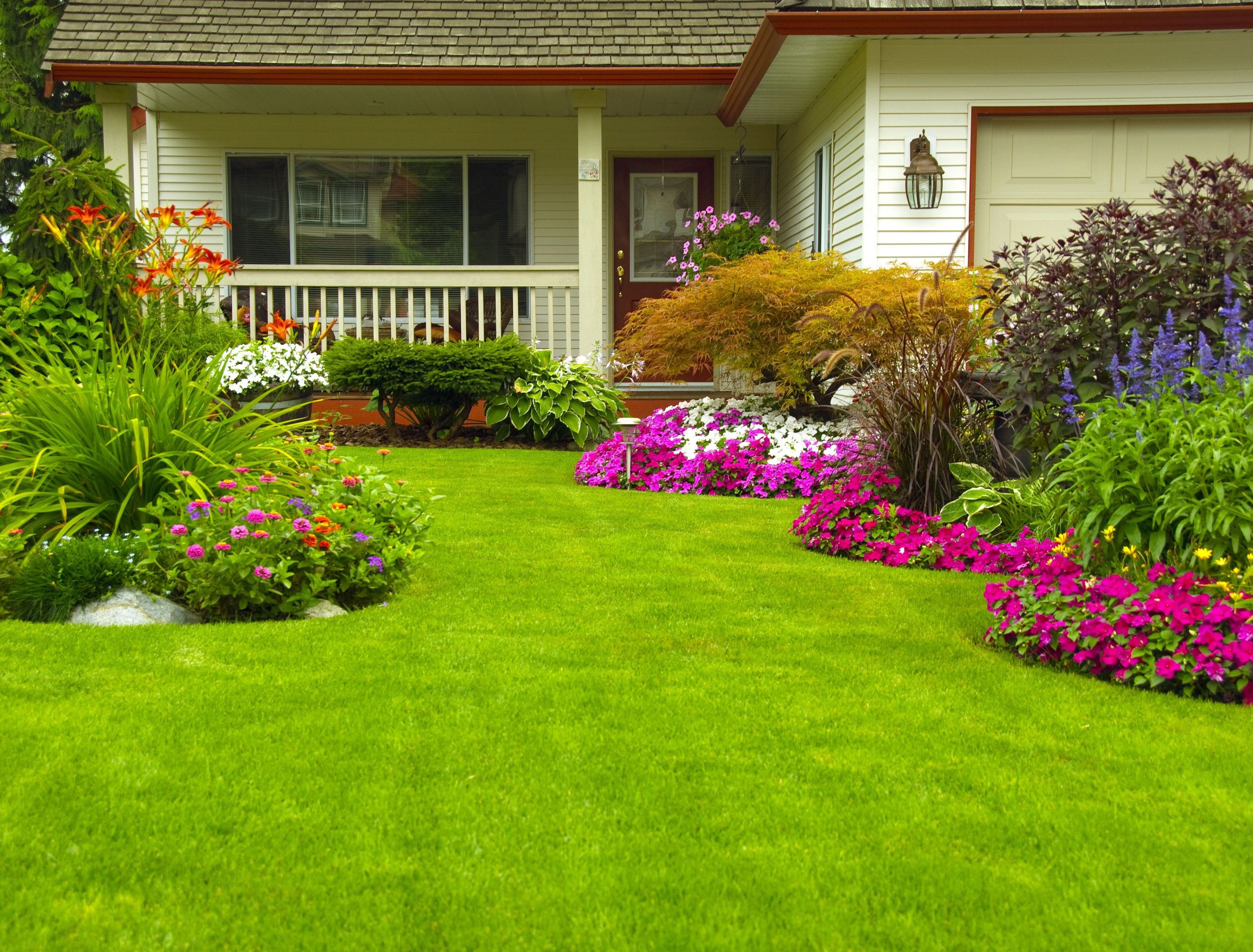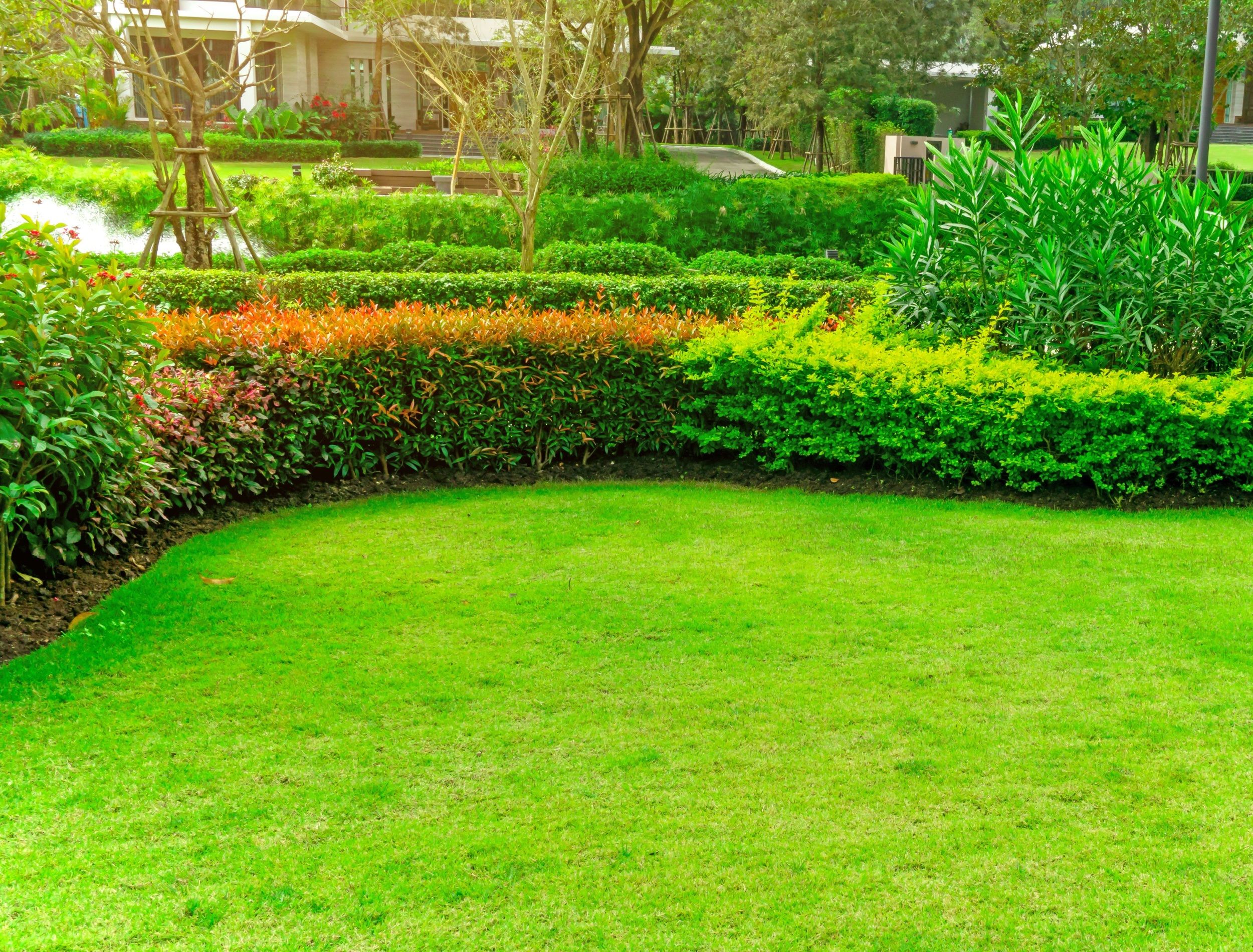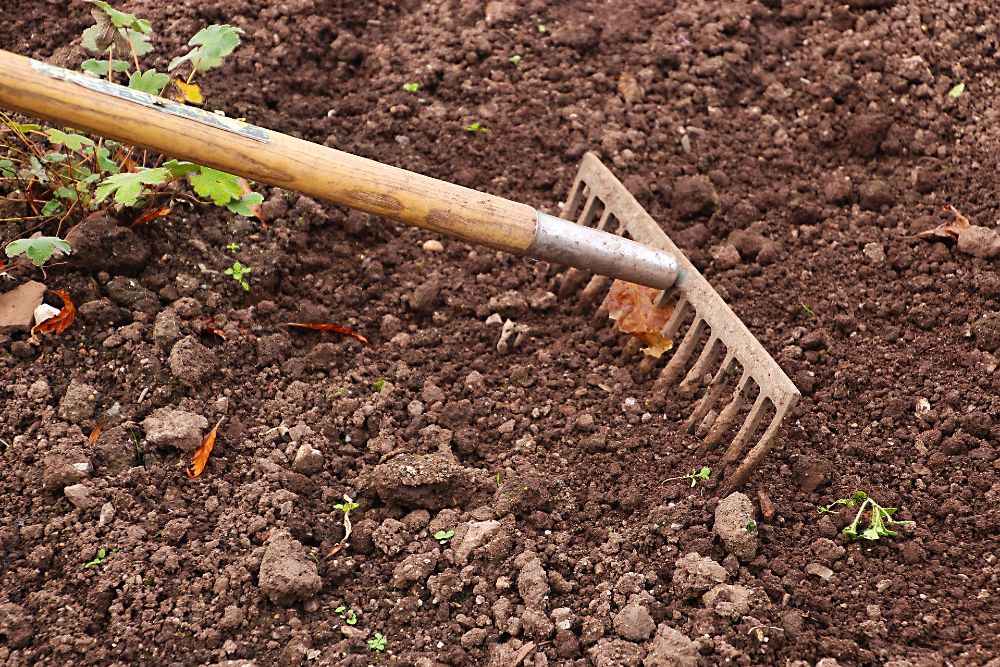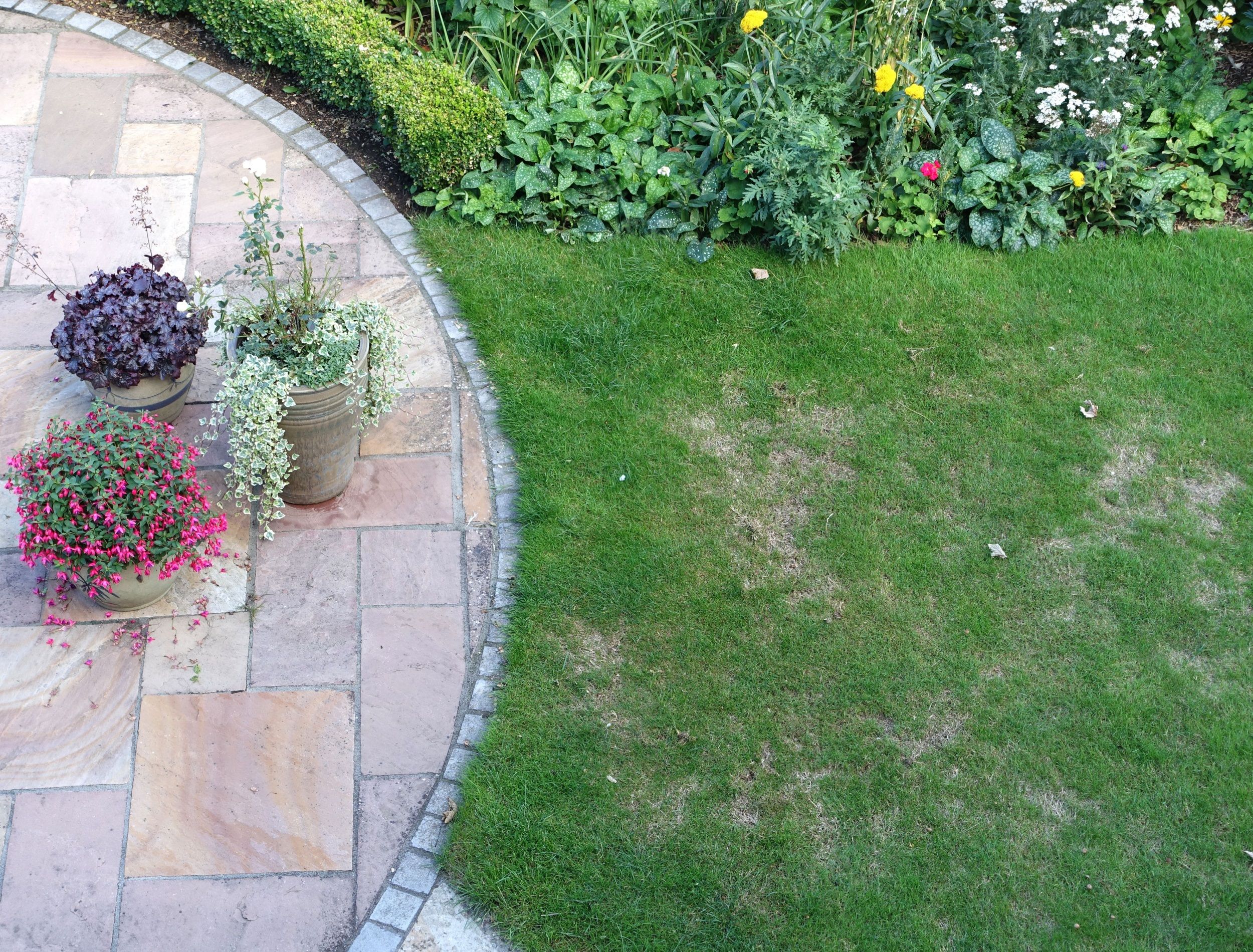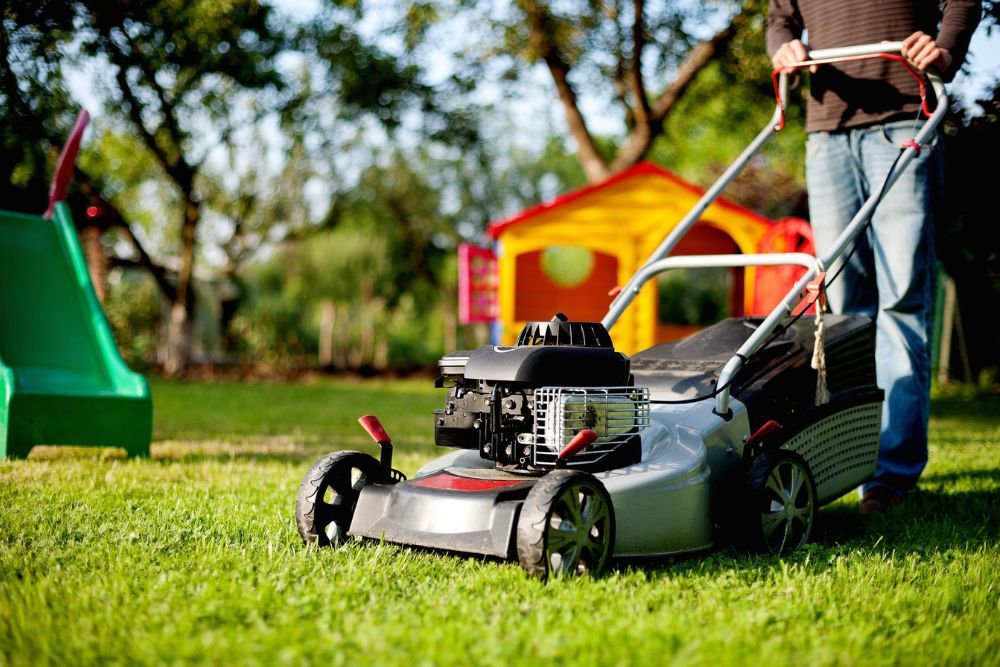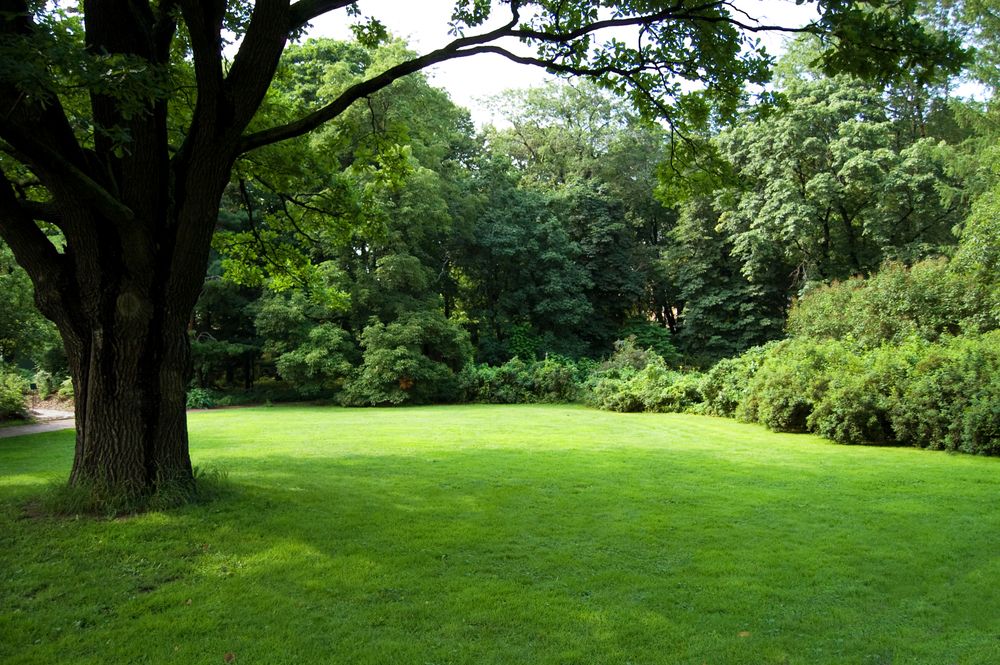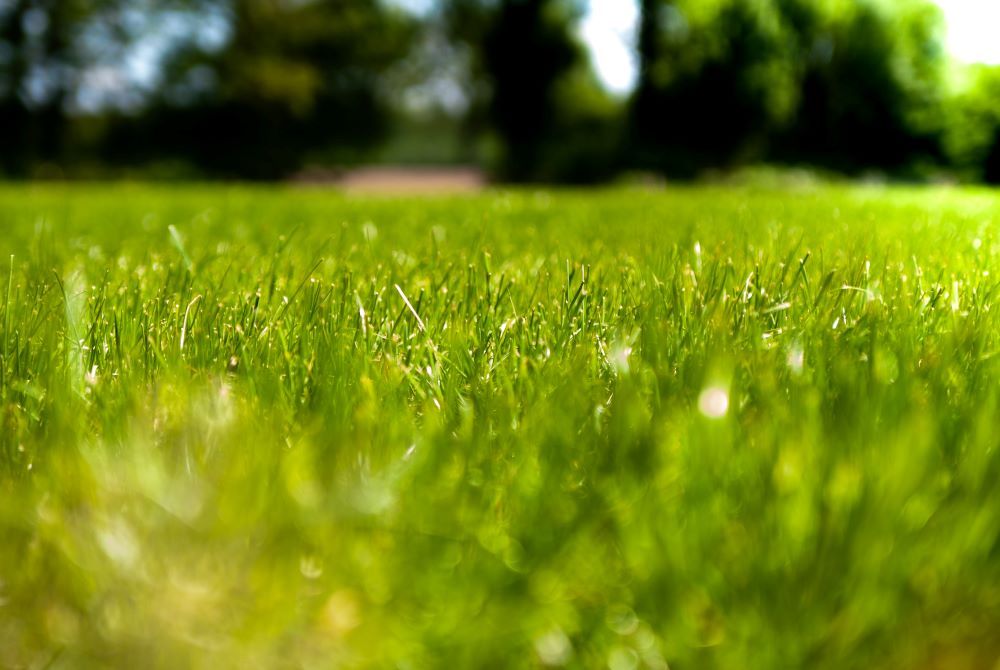Selecting the grass type for your lawn is crucial for a healthy and attractive yard. Various species thrive in different environments, and choosing the right one will depend on many factors. To grow a wonderful lawn, you must understand which grass types are best for your area and needs.
With careful consideration, you can choose the perfect grass type for your lawn and achieve the yard of your dreams. So, what are you waiting for? Get started today!
Factors to Consider When Selecting Grass Type
Choosing the right grass type for your lawn is a critical decision that can impact the appearance and health of your yard. When selecting, there are several factors to consider, such as your location, soil conditions, wear and tear on the lawn, maintenance requirements, and sunlight exposure.
Location
Image credits: aimful via Shutterstock
The first and most crucial aspect to keep in mind is your location. You can divide grasses into two categories: cool-season and warm-season grasses and each is best suited for specific regions. It is best to know what zone you live in before deciding on a variety.
Cool-season grasses, including Kentucky bluegrass, perennial ryegrass, and fescue, grow well in the northern regions of the United States. These grasses thrive in cooler temperatures, ranging from 60 to 75 degrees Fahrenheit. Their growth usually occurs in the spring and early fall. Plus, they are resistant to cold winters and summers with mild temperatures.
On the other hand, warm-season grasses, including Bermuda grass, St. Augustine grass, and zoysia grass, grow well in the southern regions of the United States. These grasses prefer warmer temperatures, ranging from 75 to 90 degrees Fahrenheit. Since they developed in tropical parts of the globe, they grow best in the full sun and enjoy the heat.
Soil
Image Credits: Dean Moriarty via Pixabay
Soil plays a critical role in the growth and health of your lawn. When selecting a grass type, consider the soil conditions in your region to make the best choice. So, the first step is testing it to determine its pH level and nutrition content.
Grasses have different soil pH requirements, but most thrive in soils with a slightly acidic pH of 6.0 to 7.0. To adjust the pH, add lime to increase it or sulfur to lower it. If the soil is too acidic, add dolomite lime, which has a greater neutralizing capacity and contains magnesium, a key element in photosynthesis. If the soil is too alkaline, add organic matter, such as peat moss, which can help lower soil pH over time.
Soil types can vary greatly depending on your location. For example, if you live in a sandy area, you'll need grass that thrives in such conditions. Bermuda grass and Zoysia grass are great for sandy soils, while fescue grass and ryegrass are better suited for clay soils. Generally speaking, warm-season grasses tend to perform better in sandy soils, while cool-season grasses are more suited for clay soils.
The nutrient content of your soil is also essential to the growth and health of your grass. Most grass types prefer soil with a good balance of nitrogen, phosphorus, and potassium. If, after the test, it turns out that your soil is deficient in these nutrients, supply them with a fertilizer specifically formulated for your grass type and the time of year. Warm-season grasses, for example, have different nutrient requirements than cool-season grasses, so choose a fertilizer tailored to your grass type.
Wear and Tear
Image credits: Cmspic via Shutterstock
It's essential to select the right grass type based on the amount of wear and tear your lawn will experience to ensure its longevity and health.
If you frequently use your lawn for activities like playing sports or hosting outdoor events, select a more durable grass type like tall fescue or Bermuda grass.
These grasses can withstand high traffic and are known for their strong roots and sturdy blades. However, if your lawn has low traffic, you can choose a more delicate grass type like Kentucky bluegrass, known for its fine texture and rich green color.
Maintenance Requirements
Image credits: Andreas160578 via Pixabay
Different grass types have varying mowing and watering requirements depending on whether they are warm-season or cool-season.
For warm-season grasses like Bermuda grass, regular mowing to a height of 1 to 2 inches at least twice a week is necessary during the growing season. However, they only require around ½ to 1 inch of water per week.
Cool-season grasses like Fescue, on the other hand, require less frequent mowing, once a week, to a height of 3 to 5 inches. But they might need to be watered more regularly, with 1 to 1½ inches of water per week.
When selecting a grass type, consider the time and resources you have available for lawn care. If you have limited time or resources, a grass type with low maintenance requirements might be a better fit.
Sunlight vs. Shade
Image credits: Andromed via Shutterstock
You need to know the exact amount of sunlight your lawn receives to pick the grass type best suited for your lighting conditions.
A cool-season grass-like fescue is the best option if your lawn is mostly shaded, as it can tolerate low light conditions. Fescue can handle as little as four hours of direct sunlight and still grow healthily.
On the other hand, warm-season grasses like Bermuda grass require at least six hours of direct sunlight to thrive. These grasses are unsuitable for shady areas as they need ample sunlight to thrive.
Some grasses, such as zoysia grass, can handle moderate shade and direct sunlight, making them a versatile option for lawns with varying light conditions.
How to Select the Right Grass Type for Your Lawn
Image credits: Jorien Loman via Unsplash
After you have learned about the most important factors, you can make the best decision. With this table, you can compare different types of grasses and choose the one best suited for your needs and location. By making an informed decision, you can ensure a healthy, lush, and beautiful lawn all year round.
|
Grass Type |
Season |
Optimal Temperature |
Hours of Sunlight |
Cold Tolerance |
Shade Tolerance |
Maintenance Level |
Wear Tolerance |
Mowing Height (inches) |
|---|---|---|---|---|---|---|---|---|
|
Kentucky Bluegrass |
Cool |
60-75°F |
6-8 hours |
Excellent |
Moderate |
High |
Medium |
2-3 |
|
Tall Fescue |
Cool |
60-75°F |
6-8 hours |
Good |
Low-Moderate |
Medium |
High |
2-4 |
|
Perennial Ryegrass |
Cool |
70-80°F |
4-6 hours |
Poor |
Moderate |
High |
Low |
1-2 |
|
Bermudagrass |
Warm |
95-100°F |
6-8 hours |
Poor |
Moderate |
High |
High |
½-2 |
|
St. Augustinegrass |
Warm |
80-100°F |
6-8 hours |
Poor |
Poor |
High |
High |
2-4 |
|
Zoysiagrass |
Warm |
80-95°F |
6-8 hours |
Good |
High |
Low |
High |
½-2 |
Find the Perfect Grass for Your Yard
Picking the right grass type can seem overwhelming, but it's crucial in establishing a healthy lawn. Consider location, soil conditions, wear and tear, maintenance requirements, and sunlight vs. shade. By doing so, you can select a grass type best suited to your specific needs and will thrive in your environment. Whether you choose a cool-season or warm-season grass, follow proper maintenance practices to keep your lawn looking its best.
Which grass is the best for your lawn? Comment below, and as always, please share!

